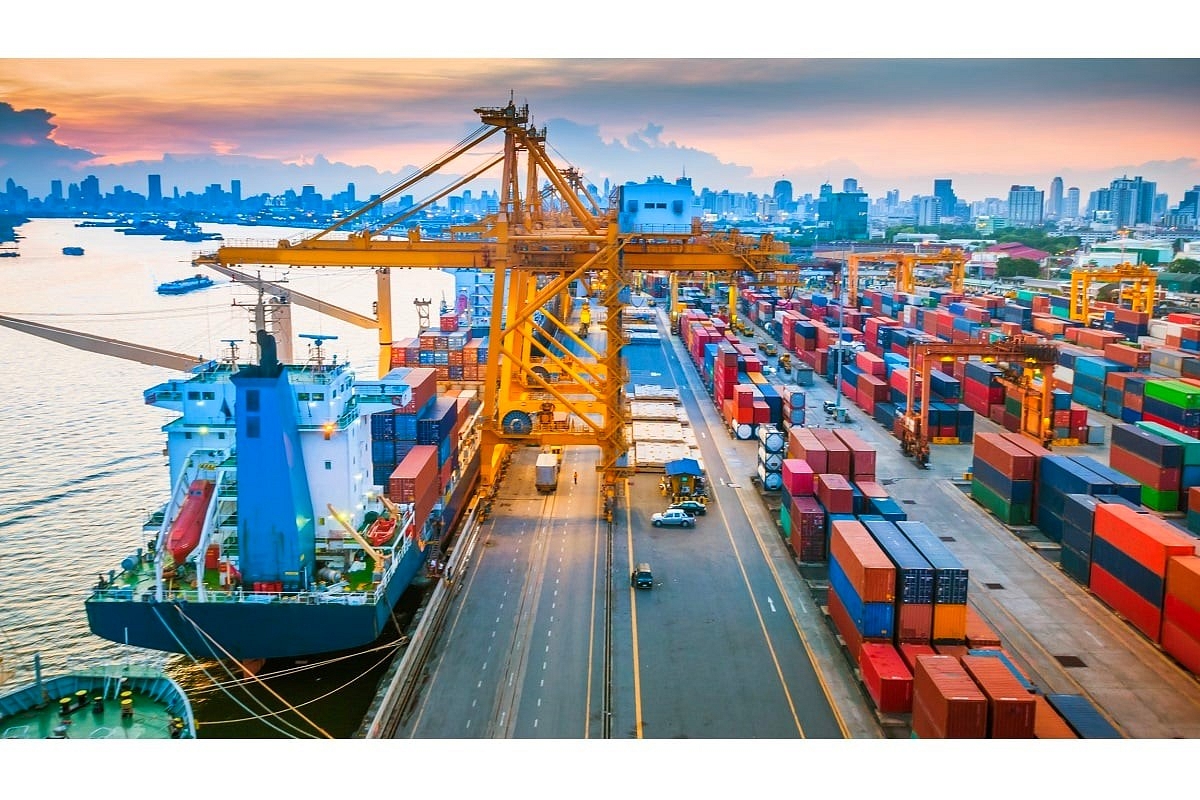Infrastructure
Inside Paradip Port: How It Surpassed Deendayal To Become India's Biggest Port
- Notably, Paradip Port is the cheapest in terms of tariff among all the ports of the country.

Paradip Port, situated in Odisha, strategically located near the mineral-rich hinterland. (istock)
Paradip Port Authority, the state-owned entity managing Paradip Port in Odisha, has emerged as India's largest major port in terms of cargo volumes, surpassing the Deendayal Port Authority in Gujarat.
In the fiscal year 2023-2024, Paradip Port Authority handled over 145 million tonnes (mt) of cargo, marking a significant growth of over seven per cent compared to the previous fiscal year. This achievement comes after Deendayal Port Authority, operating the port at Kandla, held the top position for 16 consecutive years.
For the first time in the 56 years history of operation, PPA has surpassed previous records, set by Deendayal Port. The plan is to raise its capacity to 500 million by 2047, according to its chairman, P L Haranadh.
Paradip's Rise to the Top
Paradip Port, situated in Odisha, strategically located near the mineral-rich hinterland, has historically been a crucial hub for trade and commerce. Established as the first major port on India's eastern coast post-independence, Paradip Port plays a pivotal role in serving a vast hinterland spanning across multiple states.
Under the visionary leadership of Biju Patnaik, the port was conceptualised and later inaugurated by Late Peter Stambolic, the then Prime Minister of Yugoslavia. Over the years, Paradip Port has steadily evolved into a key player in India's maritime landscape.
Diversification and Expansion
The remarkable growth trajectory of Paradip Port is attributed to its diversified cargo handling capabilities. From crude oil to iron ore, thermal coal to containers, the port boasts a versatile portfolio catering to various industries.
With a vision to further expand its operations, the Ministry of Ports, Shipping, and Waterways is set to establish a cargo handling target of 150 mt for the upcoming fiscal year. Additionally, strategic initiatives such as the launch of shuttle services and collaborations with leading container lines signify Paradip Port's commitment to enhance its global connectivity and trade facilitation, reports Economic Times.
Paradip Port is set to surpass 300 million metric tonnes capacity within three years, thanks to ongoing work on the Western Dock project. With a capacity of 25 million metric tonnes, this project will also enable the port to handle fully laden cape vessels by 2026.
Paradip Port, currently mechanising 80 per cent of its berths, aims to achieve 100 per cent mechanisation by 2030 by upgrading its existing semi-mechanised berths. Additionally, plans are underway to add four new berths, with approvals expected during the current financial year.
The port is planning to establish a 10 MW solar power plant to fully power its operations using renewable energy. Additionally, it aims to set up LNG and CNG depots at the port to facilitate green refuelling. Furthermore, plans include developing an exclusive berth for handling green ammonia/green hydrogen, positioning the port as the hydrogen hub of the country.
Moreover, the port is collaborating with IIT Chennai to develop an ultramodern signal station equipped with the latest vessel traffic management information system. This initiative will significantly enhance vessel management, marine operations, and security measures at the port.
Paradip Port has frozen its tariff for cargo handling at the level of 2022 for next three years as a part of its business development initiatives. Notably, Paradip Port is the cheapest in terms of tariff among all the ports of the country.
Future Prospects and Challenges
Despite the remarkable achievements, Paradip Port faces certain challenges, particularly in sustaining its growth in dry bulk cargo, primarily iron ore, contingent upon China's import policies.
However, proactive measures such as incentivising container traffic and forging partnerships with container lines underscore the port's resilience and adaptability. Moreover, with ambitious plans to augment steel exports and optimize coastal movement of coal, Paradip Port Authority remains poised for continued success in the foreseeable future.
In conclusion, Paradip Port Authority's ascent to become India's largest major port heralds a new chapter in the nation's maritime history. With its strategic location, diversified cargo handling capabilities, and forward-thinking approach, Paradip Port exemplifies the potential for sustainable growth and innovation in India's maritime sector.
Support Swarajya's 50 Ground Reports Project & Sponsor A Story
Every general election Swarajya does a 50 ground reports project.
Aimed only at serious readers and those who appreciate the nuances of political undercurrents, the project provides a sense of India's electoral landscape. As you know, these reports are produced after considerable investment of travel, time and effort on the ground.
This time too we've kicked off the project in style and have covered over 30 constituencies already. If you're someone who appreciates such work and have enjoyed our coverage please consider sponsoring a ground report for just Rs 2999 to Rs 19,999 - it goes a long way in helping us produce more quality reportage.
You can also back this project by becoming a subscriber for as little as Rs 999 - so do click on this links and choose a plan that suits you and back us.
Click below to contribute.
Latest